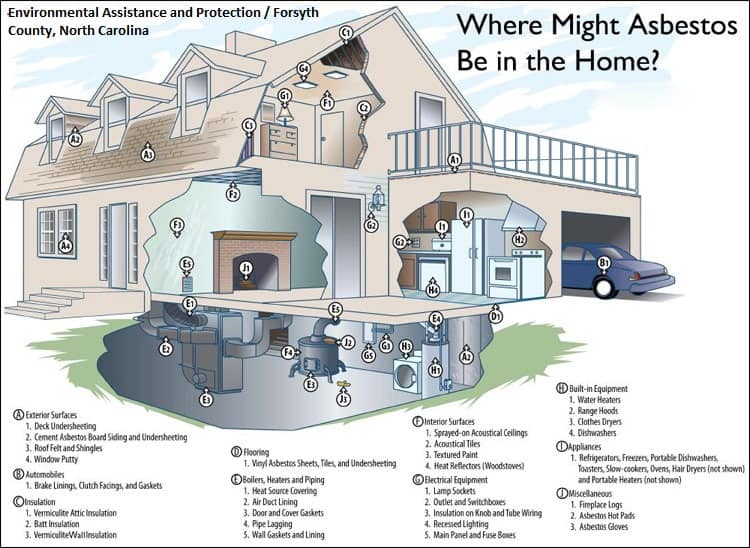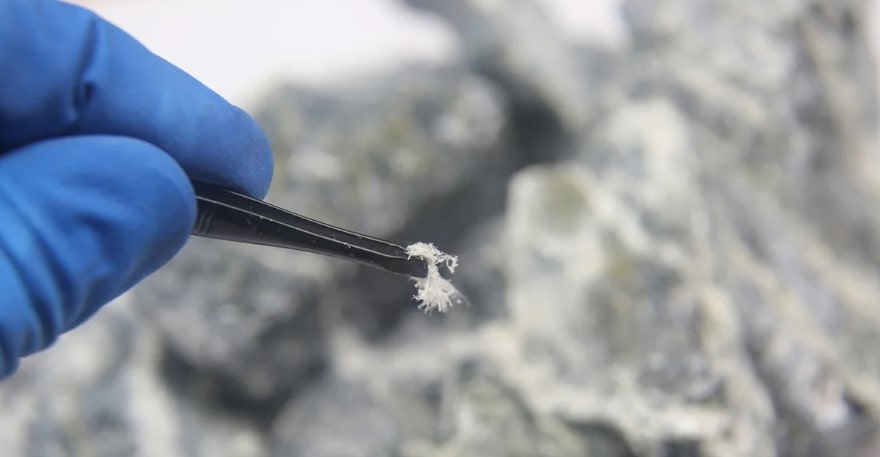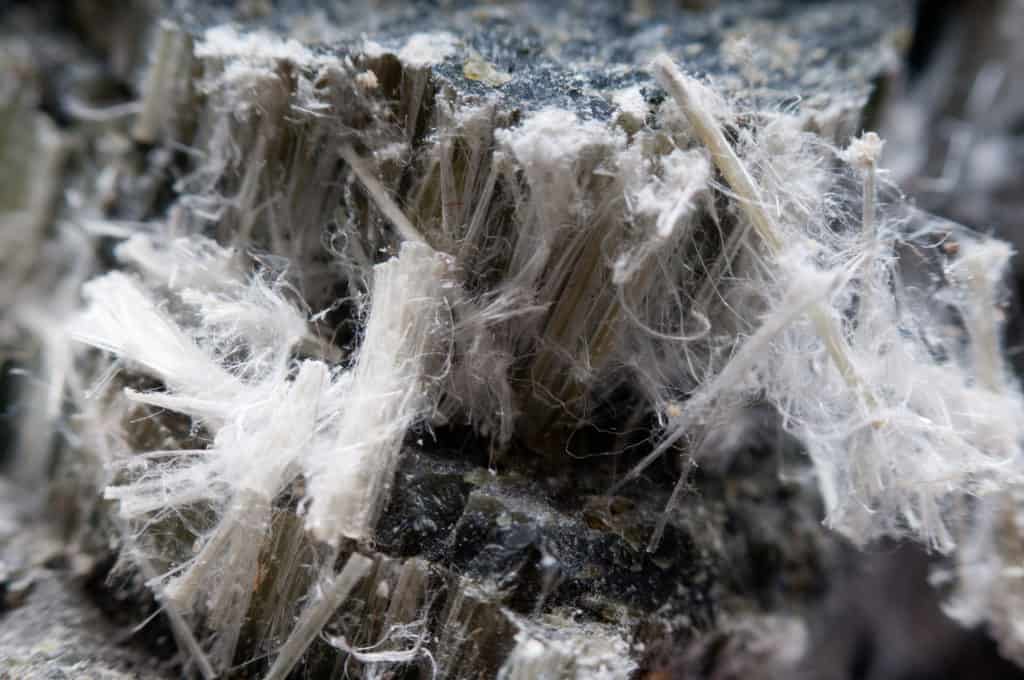Worried about potential asbestos exposure at home? Ensuring healthy indoor air quality is essential for overall well-being, particularly since we spend so much time indoors.
Indoor air quality monitors serve as essential tools for identifying various pollutants and contaminants present in our indoor environments.
In this article, we will look at the intricacies of indoor air quality monitoring and its application to asbestos detection.
Can Indoor Air Quality Monitors Detect Asbestos Particles?
Indoor air quality monitors typically cannot detect asbestos particles directly. Asbestos fibers are microscopic and require specialized equipment and techniques for detection, such as microscopic analysis or air sampling conducted by certified professionals.
Asbestos, a naturally occurring mineral fiber renowned for its strength, heat resistance, and insulating properties, was extensively used in construction materials in the past.
Despite its favorable properties, prolonged exposure to asbestos fibers can result in severe health complications, including debilitating lung diseases
can result in severe health complications, including debilitating lung diseases such as asbestosis, lung cancer, and mesothelioma
such as asbestosis, lung cancer, and mesothelioma .
.
Disturbing asbestos-containing materials can release microscopic fibers into the air, posing significant health risks to occupants through inhalation.
While most of the air quality monitors can detect general particulate matter in the air, they cannot specifically identify asbestos fibers.
can detect general particulate matter in the air, they cannot specifically identify asbestos fibers.
The detection of asbestos usually involves sampling air or materials and sending them to a laboratory for analysis.

Standard indoor air quality monitors are not specifically designed to detect asbestos particles.
These monitors typically focus on measuring parameters such as particulate matter (PM), volatile organic compounds (VOCs), carbon dioxide (CO2), humidity, and temperature.
typically focus on measuring parameters such as particulate matter (PM), volatile organic compounds (VOCs), carbon dioxide (CO2), humidity, and temperature.
While certain monitors may register elevated levels of PM, they lack the capability to differentiate asbestos fibers from other particulate matter present in the air.
from other particulate matter present in the air.
What are the challenges in Asbestos Detection?
The detection of asbestos particles in indoor air presents several challenges, primarily owing to the minuscule size of asbestos fibers and their resemblance to other airborne particles.
Here are some key challenges associated with asbestos detection in indoor air:
Size and Structure: Asbestos fibers are extremely small, ranging from 0.1 to 10 micrometers in length. These fibers are often too small to be seen with the naked eye and can easily become airborne when disturbed, making them difficult to detect using standard air quality monitoring monitors.
Similarity to Other Particles: Asbestos fibers closely resemble other airborne particles, such as dust, pollen, and fibers from textiles or construction materials.
This similarity makes it challenging to differentiate asbestos fibers from other particles based on visual inspection alone, especially in environments where multiple sources of airborne particles are present.
Background Contamination: Indoor environments may contain background levels of asbestos fibers from various sources, such as deteriorating asbestos-containing materials (ACMs), outdoor air pollution, and historical asbestos contamination.
Distinguishing between background levels of asbestos and elevated concentrations resulting from recent disturbance or activity can be challenging during air quality monitoring.
Interference from Non-Asbestos Fibers: Non-asbestos fibers, such as cellulose , fiberglass
, fiberglass , and mineral wool
, and mineral wool , can interfere with the detection of asbestos fibers in indoor air samples.
, can interfere with the detection of asbestos fibers in indoor air samples.
These non-asbestos fibers may coexist with asbestos fibers in the environment and contribute to false-positive results or misinterpretation of asbestos concentrations during analysis.
What are different Asbestos testing methods?
In cases requiring asbestos detection, professional testing conducted by certified asbestos inspectors is indispensable.
These experts employ specialized equipment and methodologies to collect air samples and analyze them for the presence of asbestos fibers.
Among the most prevalent techniques utilized is phase-contrast microscopy (PCM), facilitating the identification and quantification of asbestos fibers in air samples with precision and accuracy.
Here are some common techniques used for asbestos testing:
Phase-Contrast Microscopy (PCM):
PCM is one of the most widely used methods for asbestos testing, particularly for airborne asbestos fibers.
is one of the most widely used methods for asbestos testing, particularly for airborne asbestos fibers.
It involves collecting air samples using pumps and filters, followed by microscopic analysis to identify and quantify asbestos fibers.
PCM can distinguish asbestos fibers from other non-asbestos fibers based on their optical properties and dimensions.
Transmission Electron Microscopy (TEM):
TEM is a highly sensitive technique used for analyzing bulk materials and settled dust samples for asbestos fibers.
is a highly sensitive technique used for analyzing bulk materials and settled dust samples for asbestos fibers.
It provides detailed information about the morphology and chemical composition of individual asbestos fibers at the nanometer scale.
TEM is often employed for confirming the presence of asbestos in materials such as insulation, flooring, and ceiling tiles.

Polarized Light Microscopy (PLM):
PLM is another microscopy-based method used for asbestos testing, primarily for bulk samples of building materials.
It relies on the unique optical properties of asbestos minerals under polarized light to differentiate asbestos fibers from other materials.
PLM is commonly used for analyzing samples obtained through bulk material sampling and provides qualitative identification of asbestos.
is commonly used for analyzing samples obtained through bulk material sampling and provides qualitative identification of asbestos.
X-Ray Diffraction (XRD):
XRD is a technique used for analyzing the crystalline structure of minerals, including asbestos minerals such as chrysotile, amosite, and crocidolite.
is a technique used for analyzing the crystalline structure of minerals, including asbestos minerals such as chrysotile, amosite, and crocidolite.
XRD can identify the presence of asbestos in bulk samples of building materials by detecting characteristic diffraction patterns associated with asbestos minerals.
It is often used in conjunction with other analytical methods for comprehensive asbestos testing.
Scanning Electron Microscopy (SEM):
SEM is a high-resolution imaging technique that can provide detailed images of asbestos fibers and their surface features.
While SEM does not directly identify asbestos minerals, it can complement other microscopy techniques by providing visual confirmation of asbestos fibers in samples.
does not directly identify asbestos minerals, it can complement other microscopy techniques by providing visual confirmation of asbestos fibers in samples.
Immunoassay Testing:
Immunoassay testing involves using antibodies that specifically bind to asbestos fibers, allowing for rapid screening of samples for the presence of asbestos.
testing involves using antibodies that specifically bind to asbestos fibers, allowing for rapid screening of samples for the presence of asbestos.
While immunoassay tests offer quick results, they are less commonly used than microscopy techniques due to limitations in sensitivity and specificity.
These asbestos testing methods may be used individually or in combination, depending on the specific objectives of the assessment, the type of sample being analyzed, and the regulatory requirements governing asbestos testing procedures.
Professional asbestos inspectors and environmental consultants typically have the expertise to select the most appropriate testing methods and interpret the results accurately.
The Role of Indoor Air Quality Monitors:
While indoor air quality monitors may not directly detect asbestos particles, they remain invaluable assets in promoting healthier indoor environments.
These monitors provide continuous monitoring of various air quality parameters, enabling occupants to assess overall indoor air quality and identify potential areas of concern. 
By monitoring parameters such as humidity, temperature, and particulate matter levels, indoor air quality monitors contribute to proactive measures aimed at mitigating potential health risks associated with indoor air pollution.
How can I determine if my home contains asbestos?
Homes constructed before the 1980s may contain asbestos–containing materials such as insulation, flooring, ceiling tiles, and pipe insulation.
If you suspect that your home may contain asbestos, there are several steps you can take to assess the situation:

Identify Potential Asbestos-Containing Materials (ACMs): Familiarize yourself with common building materials that may contain asbestos, especially in homes built before the 1980s.
These materials include insulation (e.g., vermiculite insulation), flooring (e.g., vinyl floor tiles, linoleum), ceiling tiles, textured wall and ceiling coatings (e.g., popcorn ceiling), pipe insulation, and certain types of roofing materials.
Visual Inspection: Conduct a visual inspection of your home to identify any materials that appear to be deteriorating, damaged, or friable (easily crumbled).
Asbestos-containing materials may release fibers into the air when disturbed or damaged, posing a health risk.
Consult Building Records: Review any available building records or renovation history for your home to determine if asbestos-containing materials were used in construction or renovations.
Older homes may have documentation indicating the presence of asbestos or the use of asbestos-containing products.
Professional Inspection and Testing: Consider hiring a certified asbestos inspector or environmental consultant to conduct a thorough inspection and testing of your home.
These professionals have the expertise and equipment to safely collect samples of suspected ACMs and analyze them for the presence of asbestos fibers using microscopy techniques such as phase-contrast microscopy (PCM) or transmission electron microscopy (TEM).
Sampling and Analysis: If asbestos-containing materials are identified during the inspection, the inspector will collect samples from the suspect materials for laboratory analysis.
The samples will be analyzed to determine the type and concentration of asbestos fibers present. Based on the results, the inspector can provide recommendations for managing or mitigating asbestos hazards in your home.
Risk Assessment: In addition to identifying ACMs, a certified asbestos inspector can assess the condition and risk of asbestos exposure in your home.
Factors such as the location, condition, and friability of ACMs, as well as the likelihood of disturbance or damage, will be evaluated to determine the level of risk and appropriate management actions.
It’s essential to exercise caution when dealing with suspected asbestos-containing materials and seek professional assistance to ensure safe handling, testing, and management of asbestos hazards in your home.
How can asbestos fibers enter the air in indoor environments?
Asbestos fibers can become airborne when disturbed or damaged, such as during renovation or demolition activities involving asbestos-containing materials.
Once airborne, these fibers can remain suspended in the air for extended periods, posing a risk of inhalation to occupants.
Asbestos fibers can enter the air in indoor environments through various means:

Disturbance of Asbestos-Containing Materials (ACMs): Asbestos-containing materials may release fibers into the air when they are disturbed, damaged, or deteriorating.
Common activities that can disturb ACMs include renovation, remodeling, drilling, cutting, sanding, scraping, or demolition work. Even minor actions like drilling a hole in a wall or removing ceiling tiles can release asbestos fibers into the air if the materials contain asbestos.
Wear and Tear:
Over time, asbestos-containing materials may degrade or deteriorate due to age, moisture, vibration, or other factors.
As ACMs deteriorate, they may release asbestos fibers into the air, especially if they become friable (easily crumbled or damaged).
This can occur with materials such as insulation, ceiling tiles, or textured wall coatings.
Natural Disasters or Accidents:
Natural disasters such as earthquakes, floods, or severe storms can damage buildings and disturb asbestos-containing materials, releasing fibers into the air.
Similarly, accidents such as fires or explosions involving buildings with ACMs can result in the release of asbestos fibers into the environment.
Maintenance and Repair Activities:
Routine maintenance, repair, or installation work in buildings with ACMs can potentially disturb asbestos-containing materials and release fibers into the air.
For example, drilling into walls or ceilings for electrical work or installing new plumbing fixtures may inadvertently disturb ACMs and cause fiber release.
Occupant Activities:
Certain daily activities performed by building occupants, such as moving furniture, vacuuming, or sweeping, may inadvertently disturb asbestos-containing materials and contribute to fiber release.
While these activities may not generate significant asbestos exposure under normal circumstances, they can pose a risk if ACMs are present and damaged.
HVAC Systems:
Asbestos-containing materials used in HVAC (heating, ventilation, and air conditioning) systems, such as duct insulation, gaskets, or boiler insulation, can release fibers into the air when the systems are operated or maintained.
Poorly maintained HVAC systems or ductwork with damaged insulation may contribute to asbestos fiber dispersion throughout indoor environments.
Any activity that disturbs or damages asbestos-containing materials has the potential to release asbestos fibers into the air, increasing the risk of exposure to occupants.
Proper identification, assessment, and management of ACMs are essential to minimize the risk of asbestos exposure in indoor environments.
FAQs:
Is asbestos exposure dangerous?
Asbestos exposure poses significant health hazards, including severe respiratory diseases such as asbestosis, lung cancer, and mesothelioma. It is imperative to avoid disturbing asbestos-containing materials and seek professional assistance for testing and remediation if necessary.
What are the health risks associated with asbestos exposure?
Asbestos exposure can lead to serious health conditions such as asbestosis, lung cancer, mesothelioma, and other respiratory diseases. These conditions often develop over time and can have devastating effects on an individual’s health.
Are there any regulations or guidelines regarding asbestos testing and remediation?
Regulatory agencies such as the Environmental Protection Agency (EPA) and Occupational Safety and Health Administration (OSHA) have established guidelines and regulations governing asbestos testing, management, and remediation. Compliance with these regulations is crucial to ensure the safety of occupants and workers.
Conclusion:
While indoor air quality monitors play a pivotal role in monitoring various pollutants and contaminants in indoor environments, they are not equipped to detect asbestos particles.
Professional asbestos testing conducted by certified inspectors remains the gold standard for accurate asbestos detection.
Given the severe health risks associated with asbestos exposure, proactive measures such as regular testing and proper remediation are imperative to safeguarding indoor air quality and protecting occupants’ health and well-being.

